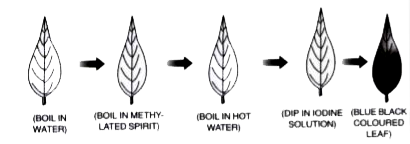A balloon fixed to the neck of a bottle gets inflated if the bottle is placed in a bowl of hot water. Why?
To understand why a balloon fixed to the neck of a bottle gets inflated when the bottle is placed in a bowl of hot water, we can break down the explanation into a series of logical steps:
1. Setup Description:
- We have a bottle that is sealed with a balloon at its neck. The bottle is placed in a bowl of hot water.
2. Initial Condition:
- Initially, the balloon is deflated, and the air (gas) inside the bottle is at a lower temperature.
3. Heating Process:
- When the bottle is placed in hot water, the heat from the water transfers to the bottle and subsequently to the air inside the bottle.
4. Effect of Heat on Gas:
- As the air inside the bottle heats up, the temperature of the gas increases. According to the kinetic theory of gases, the molecules of the gas gain kinetic energy and start moving more rapidly.
5. Molecular Movement:
- With increased kinetic energy, the gas molecules move faster and collide with each other and the walls of the bottle more frequently and with greater force.
6. Expansion of Gas:
- Due to the increased motion and energy, the gas molecules attempt to expand and occupy a larger volume. However, the walls of the bottle restrict this expansion.
7. Inflation of the Balloon:
- Since the balloon is flexible and can expand, the gas molecules push against the balloon, causing it to inflate as the gas tries to escape the confined space of the bottle.
8. Conclusion:
- Therefore, the balloon gets inflated because the air (gas) inside the bottle expands upon heating, and since the gas cannot expand into the bottle, it fills the balloon instead.
Final Statement:
The air inside the bottle expands on heating, and this expansion fills the balloon, causing it to inflate.
---
- We have a bottle that is sealed with a balloon at its neck. The bottle is placed in a bowl of hot water.
- Initially, the balloon is deflated, and the air (gas) inside the bottle is at a lower temperature.
- When the bottle is placed in hot water, the heat from the water transfers to the bottle and subsequently to the air inside the bottle.
- As the air inside the bottle heats up, the temperature of the gas increases. According to the kinetic theory of gases, the molecules of the gas gain kinetic energy and start moving more rapidly.
- With increased kinetic energy, the gas molecules move faster and collide with each other and the walls of the bottle more frequently and with greater force.
- Due to the increased motion and energy, the gas molecules attempt to expand and occupy a larger volume. However, the walls of the bottle restrict this expansion.
- Since the balloon is flexible and can expand, the gas molecules push against the balloon, causing it to inflate as the gas tries to escape the confined space of the bottle.
- Therefore, the balloon gets inflated because the air (gas) inside the bottle expands upon heating, and since the gas cannot expand into the bottle, it fills the balloon instead.
The air inside the bottle expands on heating, and this expansion fills the balloon, causing it to inflate.
Similar Questions
Knowledge Check
If water in a closed bottle is taken up to the moon and open, the water gets
AfreezedBboiledCdissociated into O2andH2Devaporated
If a bowl in formed from the same steel piece then it can float in water. Why?
View SolutionWhy is an egg kicked out of a bottle when air is blown inside the bottle?
View SolutionA 250cm3 glass bottle is completely filled with water at 50∘C. The bottle and water are heated to 60∘C. How much water runs over if:
a. the expansion of the bottle is neglected:
b. the expansion of the bottle is included? Given the coefficient of areal expansion of glass β=1.2×10−5/K and γwater=60×10−5/∘C.
View SolutionA glass stopper stuck in the neck of a bottle can be removed by pouring hot water on the neck of the bottle. Explain why?
View SolutionAn empty glass bottle is fitted with a narrow tube at its mouth. The open end of the tube is kept in a beaker containing water. When the bottle is heated, bubbles of air are seen escaping into the water. Explain the reason.
View SolutionA cylindrical massless cord of length l=10cm and radius r=3cm is slowly extracted from the neck of a bottom opened bottle. If the normal pressure between the botle and un-extracted part of the cork at any instant is constant and equal to P=105πN/m2, find the work done (in Joule) in extracting it completely. The coefficient of friction between the cork and bottle is μ=0.3

View SolutionThe diagram below illustrates iodine test for the presence of starch in a leaf

Why is the leaf again boiled in hot water?
View Solution

